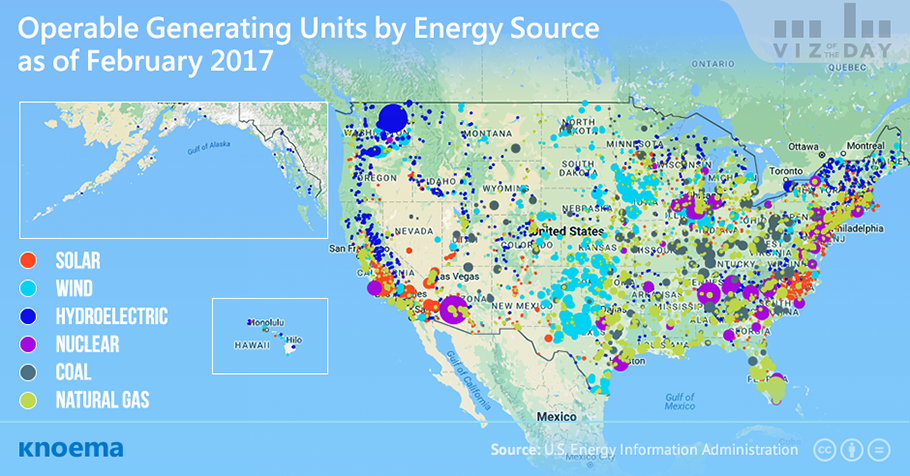An extended crisis in the US coal industry and ecological concerns surrounding energy generation are important contributors to the phenomenal growth in solar power generation capacity in the US during the last decade. Net solar electricity generation has increased by 7,135 percent, from about 508,000 MWh in 2006 to 36.8 million MWh in 2016.
- The average growth rate for solar power generation capacity was about 73 percent per year between 2010 and 2016, a significantly higher rate than other electricity generation technologies. The rate has slowed, however, during the last three years, increasing by 46 percent from January 2016 to January 2017, according to US Energy Information Administration (EIA).
- Last year, California led the nation in new solar capacity generation, while Minnesota was the top state by new solar capacity as a share of pre-2016 capacity.
- Even some US-based coal companies are now turning to solar, transforming coal real estate into solar farms and publicly promoting the job growth the strategy promises for communities that have suffered during the decline of US coal production.
Today, the combined net electricity generation capacity of the country’s 2,000 solar power plants is just 2 percent of the national total, and just 1 percent of the United State's total electricity generation. So, what do energy authorities expect from this industry going forward?
- During 2017, US solar power generation is expected to grow at a slightly lower rate than in 2016 at about 37 percent, according to the EIA Short Term Energy Outlook published this month. Even so, the US appears to be on track to reach a record output level of 189.83 GWh per day next month.
- The IEA World Energy Outlook 2016 offers three scenarios for US solar energy generation growth over the long term through 2040. According to the most optimistic scenario—the “450 Scenario”—US solar electricity generation in 2040 will be about 575 TWh, a level almost equal to the net electricity generation from all US renewable sources in 2016.
Материалы по теме
BP Statistical Review of World Energy, 2016
Since the 1950s, the BP Statistical Review of World Energy has delivered objective and globally consistent data on world energy markets. The publication has become a widely respected and authoritative publication in the field of energy economics, relied on by media outlets, academia, world governments, and energy companies alike. BP publishes a new edition each June and typically conducts a road show to launch the report in the months preceding the official release. The 2016 edition highlights significant changes in global energy production and consumption that have had profound implications for global market prices, fuel mix, and carbon...
Unconventional Resources Technology Conference
Shale plays continue to hold a significant place in the world’s energy future. URTeC is the only event that brings the entire ascent team together under one roof to connect on all things unconventional.Anchored by the Society of Petroleum Engineers (SPE), the American Association of Petroleum Geologists (AAPG) and the Society of Exploration Geophysicists (SEG), plus eight of the world’s leading professional organizations, it remains the most vibrant and vital event that every upstream energy professional should attend because its collaborative platform and innovation exchange sustains and propels the industry’s ongoing success. With 2,500+...
BP Energy Production and Consumption Forecast by Fuel and Region
Natural Gas | Oil | Coal | Renewables Source: BP Energy Outlook 2035, February 2015
